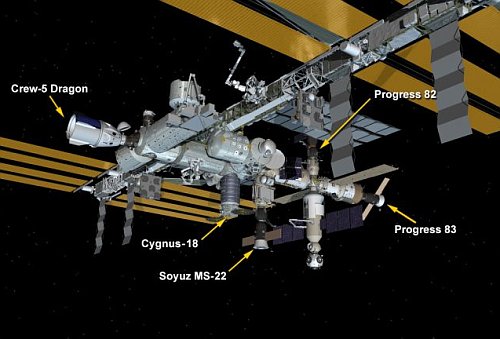February 13, 2023 Quick space links
Courtesy of BtB’s stringer Jay, who also clued me into to the updates on the Russian spacecraft leak situation on ISS.
- Blue Origin says it has made both solar cells and electricity transmission wires from simulated lunar soil
The article claims this is a major breakthrough, but I am sincerely underwhelmed. Though eventually such technology might be important for lunar colonists, right now it makes no sense to spend private capital on it. For at least the next two decades, power on the Moon is going to from solar panels shipped there. Other companies such as Astrobotics are developing cheap and easy-to-ship-and-install panels for those first missions, and they, not Blue Origin, are going to reap the profits.
- Pseudo Chinese rocket startup Space Pioneer gearing up for first launch of Tianlong-2 rocket by end of March
If successful, it would be the first liquid fueled rocket by a Chinese pseudo company to reach orbit. Others have tried and failed.
- Graphic of Chinese pseudo-company DeepBlue Aerospace’s fleet of rockets under development
Jay sums this up well: “Names of the rockets: Copy#1, Copy#2, Copy#3, Copy-Heavy#4, and of course Super Heavy Copy#5.” I will add that this is all fantasy at this moment.
- China’s FAST radio telescope discovers 740 pulsars
The claim is made by the telescope’s chief engineer, which suggests China has still not found a high quality astronomer to manage its science operations.
Courtesy of BtB’s stringer Jay, who also clued me into to the updates on the Russian spacecraft leak situation on ISS.
- Blue Origin says it has made both solar cells and electricity transmission wires from simulated lunar soil
The article claims this is a major breakthrough, but I am sincerely underwhelmed. Though eventually such technology might be important for lunar colonists, right now it makes no sense to spend private capital on it. For at least the next two decades, power on the Moon is going to from solar panels shipped there. Other companies such as Astrobotics are developing cheap and easy-to-ship-and-install panels for those first missions, and they, not Blue Origin, are going to reap the profits.
- Pseudo Chinese rocket startup Space Pioneer gearing up for first launch of Tianlong-2 rocket by end of March
If successful, it would be the first liquid fueled rocket by a Chinese pseudo company to reach orbit. Others have tried and failed.
- Graphic of Chinese pseudo-company DeepBlue Aerospace’s fleet of rockets under development
Jay sums this up well: “Names of the rockets: Copy#1, Copy#2, Copy#3, Copy-Heavy#4, and of course Super Heavy Copy#5.” I will add that this is all fantasy at this moment.
- China’s FAST radio telescope discovers 740 pulsars
The claim is made by the telescope’s chief engineer, which suggests China has still not found a high quality astronomer to manage its science operations.










